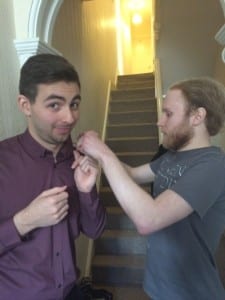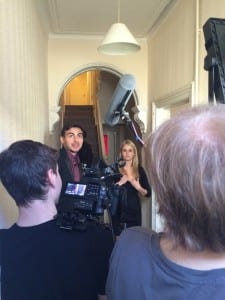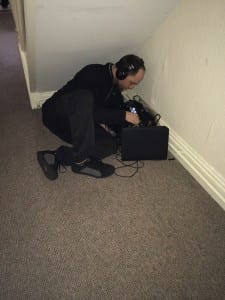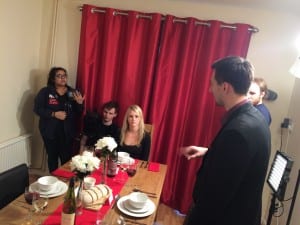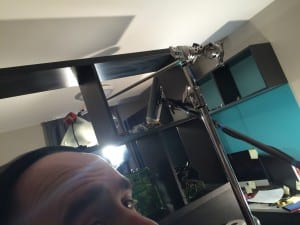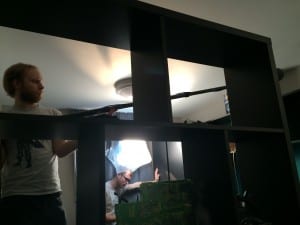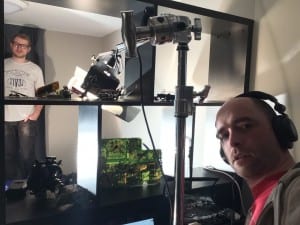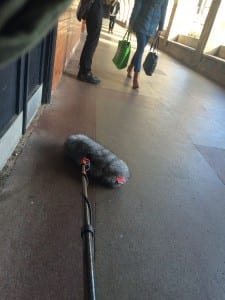(Addresses outcomes – GR1, GR2, PER1)
Approaching the work as a larger group this term requires us to consider the potential real-world management of such activity. As such, I will briefly discuss our decisions for splitting up of credit in the context of Omni-Gaffer Productions (which I cover in more detail in my post about contracts here) provide an overview of some issues with intellectual property we’ve researched, and discuss the possible business structures we might use to enable our work.
Five parties constitute Omni-Gaffer Productions, and it’s the agreement between these five parties to work together on the film projects at hand which really brings that business into being. Obviously, no money is changing hands for the work, but credit will be due for work in the academic context and it’s this which drove us to formalise our collaboration in this way. We hoped that doing so would enable us to carry out more ambitious work (by providing more comprehensive services to a larger number of films this term), in that researching and operating something akin to a formal business structure would go some way to breaking down a situation we’ve identified at university as something akin to silo mentality found in corporate literature:
‘Silo mentality is an attitude found in some organizations that occurs when several departments or groups do not want to share information or knowledge with other individuals in the same company. A silo mentality reduces efficiency…‘ (investopedia.co.uk – emphasis in original) [GR1 + GR2]
In the case of creative work at university, it is more the sharing of labour (rather than knowledge specifically, though the latter tends to follow) which is avoided because students do not see the value of collaborating outside of their small groups within the context of their own disciplines, usually because they believe they will receive no formal academic credit for doing so and, obversely, are often hostile to the implicit idea that others will be unfairly rewarded for work they themselves have not carried out. As such, we were interested in making sure formal rewards would be shared between the parties to the Omni-Gaffer Productions workload in the hope that this would incentivise closer collaboration and increase our efficiency as a team.
I have tended to break the work on the five films we’ve carried out into two categories – Services and Creative. Examples of services would be location audio, dub mixing, foley and editing, where creative would be compositional work. The key distinction between these is whether or not they entail the creation of intellectual property, such as the composition of a new musical work for the use of the film, and this creation of intellectual property problematises the situation we’ve developed somewhat when we transcribe it to the real world.
Basic first principles of intellectual property: ‘Intellectual property is something unique that you physically create. An idea alone is not intellectual property. For example, an idea for a book doesn’t count, but the words you’ve written do.’ and at the point a person creates, a copyright is also created- ‘Copyright protects your work and stops others from using it without your permission. You get copyright protection automatically…‘ (www.gov.uk).
With regards to music specifically, this gives rise to the potential for two types of renumeration for works in the form of mechanical and performance royalties. Mechanical royalties are payable on the copying or reproduction of a song or work, where performance royalties become payable when the work is aired in public, such as on television or the radio. These royalties are relevant to the university project because they can provide a longer tail of income (unlike services for which payment would generally be rendered upon completion) which should be properly accounted for if the collective has been involved in the production of the intellectual property (such as several songwriters collaborating on a song) as a future stream of income, and because the rights governing their use must be established in the specific context of each film and Omni-Gaffer Productions, and between the individual composer or composers and the collective body that is Omni-Gaffer Productions. [PER1]
I deal with these latter two specific agreements in another post, and will here concentrate on research carried out on the specifics of intellectual property as it relates to production by students in the context of a university course.
There was initially some question as to whether IP created by students would be controlled by the university, given the university’s role as facilitator and the argument that creation of IP is often facilitated by use of the university’s equipment, giving it as an entity some claim to proceeds generated from IP’s. We were referred to the university’s policy on student IP which states ‘The University of Lincoln acknowledges that its students own the IP in materials that they create in the course of their studies with the University unless there is a written agreement to the contrary.’ but that …’Students enrolled with the University may be required to assign their IP to the University in a number of circumstances which will require them to complete and sign a Student Intellectual Property Rights Agreement.’ (University of Lincoln)
Furthermore, the wider policy on intellectual property states that ‘The product of work carried out with the benefit of the University environment (including facilities, resources, expertise and intellectual assets) constitutes Intellectual Property that should be owned, protected and used by the University for the benefit of the University specifically and for the benefit of society more generally.‘ (University of Lincoln).
Whilst this seems to be a case of the students retaining IP unless they sign it away, there is a conflict evident between the general policy claim and the student policy claim where IP can be considered the product of work carried out utilising university facilities and advice, and where ambiguity exists it’s usually a good idea to seek advice, which I did.
Barry Turner is a senior lecturer with a specialism in media law who, upon consultation, pointed out that these matters are ultimately rooted in the laws protecting consumers in the UK. He referred me to the Competition and Markets Authorities Guidance for Higher Educational Institutions, and in particular page 48:
“…In general, HE providers will not have an automatic statutory claim to intellectual property (IP) generated by students given that they are not employees, but many HE providers do set out rules about IP ownership in their IP policy/terms and conditions. Undergraduate students can generate significant IP products, for example in creative sectors this could include designs, artworks and writings.
5.33 A term that has the object or effect of changing the ownership of IPRs from the position that would exist under the general law is potentially unfair. Where IPRs are created by a student during their time studying and they would belong to them under the general law, the starting position should be that they retain the IPRs.
5.34 A blanket term that applies so that all students’ IPRs (for example, all written work, creations, inventions and discoveries) are assigned by students to the HE provider, regardless of the circumstances of study or the type of course, may be open to challenge as unfair under unfair terms legislation.“
KEY POINTS –
How and why OG exists – Professional practice
- [GR1] To professionally operate as a small to medium size company (or other recognisable business entity) in the audio production / post-production field might.
- [GR2] To organise and fulfil an operating strategy and schedule which deals with multiple productions simultaneously, and which maximises efficiency and minimises issues or risks to delivery.
Details of intellectual property situation at university and relevant laws – Research
- [PER1] To develop a better understanding of the pros and cons of business structures, processes, regulations and agreements which might enable film audio producers to collaborate on multiple projects.






